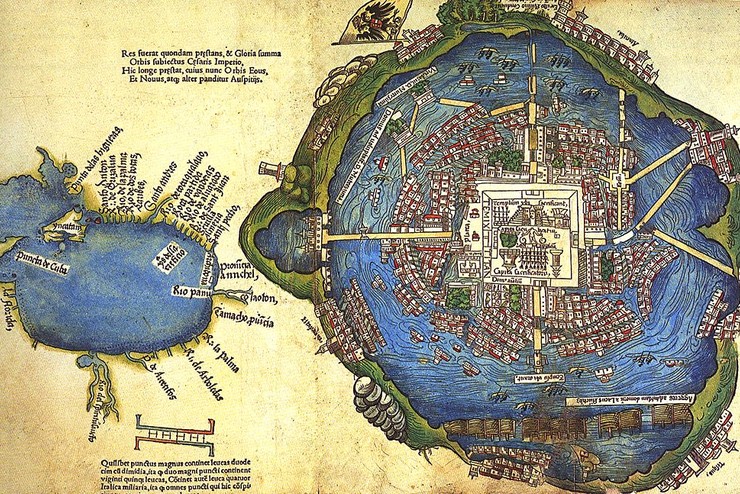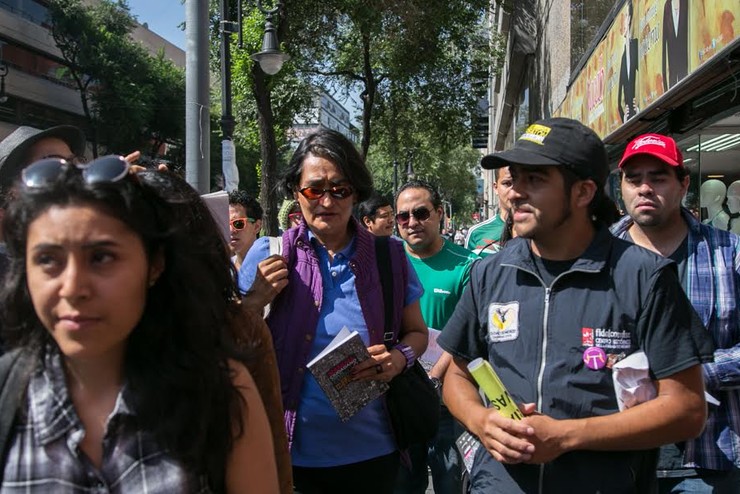
The Route
Behind the counter, Mr. Sulca shows us several newspaper clippings. One runs a story following one of his projects: a stimulator for the nervous system which combats Parkinson’s - “It is one of my obsessions,” - but not his only one. The small local operation located on Mesones 14 is also a laboratory. “Everything is up for sale; everything I made myself,” he boasts to Jon Rogers, Professor at the University of Dundee, who examines and touches each apparatus. “You have to see this,” he calls over. As if that were not enough, “It uses Eprom—hat’s off,” declares Erik, a worker passing by.
Indeed there’s no doubt that Mexico City is a laboratory—it has been that way since its foundation. The Route of Makers that we tread today is a walk through the layers which give life to the Centro Histórico (Historic City Center) and tells a story forged by workers from an ancient Mesoamerican world who confronted an Old World to invent a “New Continent.” What better stage to explore the digital future.
Patricio Buenrostro, a futurologist and self-professed entrepreneur, is one of the guides along the Route of Makers, organized by the Laboratory of Mexico City to initiate this Mexican-British dialogue in which gamers, makers, creative minds, and navigators of the latest technologies will reinvent the Now in order to transform it into a prototype, story, game…
We Mexicans retrace our history along this route which directs us through a centre which is part of our living legacy. To the British, it is known as the great twenty-first century Tenochtitlan, through which a ghostly vision of that ancient city still seeps. Each traveller marks her own path. On the avenue 20 de Noviembre, mannequins dressed like brides direct us to the right towards the street, Regina. We arrive at Pino Suárez where all worlds converge: architecture and the work that we have been performing since the start of our history. If there is anything Mexicans know how to do, it is work. We are workers.

© Centro de Cultura Digital & Laboratorio para la Ciudad
Turning left on Mesones, there are churches, cantinas, hardware stores, fabrics, notebooks, cables, imitation jewellry, buttons, bottles, bows, stamps, paints… a centre that seems to be a massive library of tastes and interests. Indeed every street is a specialised branch. This dazzles us.
There stands Mr. Sulca behind the counter of his miniature store. “I have designed everything,” he says, and this everything includes programs, apparatuses, electronics… “For over fifty years I have been inventing and investigating.” These products do more than operate; they boast a fun and functional aesthetic. What’s more, they confirm a premonition by George Orwell in his book 1984: “If there is hope (wrote Winston) it lies in the proles.”
This reality continues to ring true upon arriving at Lázaro Cárdenas, where the din of voices asking us what we are looking for are the antechamber to a universe in which any kind of computer or dream is possible. There are pirated products, reinventions, recyclables, assemblies, keyboards, cables, chips, people, shouts, display windows, cables, monitors, keyboards, programs… all blend together to invite us to also build the impossible. Welcome to the vanguardism of the periphery.
The street of Donceles, though a bit overly renovated, is crafty and has managed to escape the bourgeois trend that nowadays typifies the historical centres of the great metropolises. Here old and used books continue to be found in print and share their nostalgia with photography stores where analogue cameras prevail. We are near the end of the route: the Plaza Santo Domingo.

© wolfguenterthiel.blogspot.com
From the green terrace of the Laboratory of Mexico City, the historic centre is organised in a grid that seems like a live miniature. From its heights we re-traverse in our imagination the routes of makers of other centuries. These are the moments leading up to the inauguration of the Digital Futures UK-MX challenge.
Translated by Anya Russian. Abridged by the CE team. Read Part 2 here.
Miriam Mabel Martínez is an editor and chronicler. She is currently working on what she descibes as "a collective book about fabrics seen as a nodal form of art for social resistance".
This piece will be published in full in 'Crafting Our Digital Futures', a publication funded by the Arts and Humanities Research Council as part of Digital Design Weekend 2015.
Commissioned by the Centre for Digital Culture (CCD) for Digital Futures UKMX.